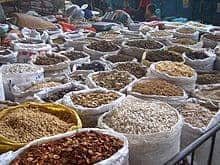A new study published in Restorative Neurology and Neuroscience demonstrates that Chinese herbal medicine Ji-Sui-Kang (JSK), given systemically for three weeks after injury in rats, improved locomotor function, reduced tissue damage, and preserved the structure of neural cells compared to control rats.
The report also includes data showing that JSK may first act to reduce inflammation and cell apoptosis and death, and boost local oxygen supply while, later on, it appears to restore function and promote tissue regeneration.
Although Chinese herbal medicines have traditionally been used for a variety of ailments, the rationale for their use relies more on anecdotal evidence than the results of modern-day controlled experiments.
“A number of anecdotal reports from Chinese medicine practitioners indicate that treatment with a novel herbal formulation, JSK, for periods of one week or three months improved functional recovery,” explains co-lead investigator Shucui Jiang, MD, PhD, head of the Hamilton NeuroRestorative Group at McMaster University in Hamilton, Ontario, Canada. “Our present study provides an important and necessary foundation for further studies of JSK.”
In this study rats began JSK treatment immediately after undergoing spinal cord injury. Within 7 days, hindlimb locomotor function was significantly better in JSK-treated rats compared to those receiving only saline. JSK-treated rats continued to have better motor function than controls throughout the 21-day test period and treated animals appeared to support their weight better and have more coordinated movements.
When the investigators looked at histological samples of the spinal cord, they found that the architecture of the spinal cord was better preserved in JSK-treated animals and the size of the injured area was significantly smaller 7 days after injury. JSK-treated animals also showed more intact axons and myelin in the injured areas compared to controls. Other encouraging signs were less deposition of fibrinogen in the injured areas of JSK-treated animals, a decrease in pro-inflammatory COX-2 expression, and fewer cell deaths at the lesion site (as measured by caspase-3 staining).
JSK also increased the expression of growth associated protein 43 (GAP43), a marker of neuronal development and axonal regeneration, and neuroglobulin, a protein found in cerebral neurons that is thought to help neurons survive and recover after trauma. “Our data suggest that JSK may enhance tissue recovery by reducing cell growth inhibitors and by promoting the proliferation of cells within the injured spinal cord,” says co-lead investigator Michel P. Rathbone, MD, CHB, PhD, Professor, Division of Neurology, Department of Medicine, McMaster University, Hamilton, Ontario, Canada.
Other findings suggest JSK might help protect against injury caused by damage to spinal cord blood vessels. For instance, JSK increased vascular endothelial growth factor (VEGF), a protein involved in the formation and growth of blood vessels, down-regulated clotting-associated genes, and promoted factors that contribute to vasodilation.
The authors say that JSK targets multiple biochemical and cellular pathways that may help protect against the primary traumatic injury as well as subsequent secondary injuries that evolve over time.
The authors do not disclose the complete herbal composition of JSK for proprietary reasons. Some of its ingredients include Ginseng, Rhizoma (chuan xiong), Glycyrrhizae Radix (gan cao), Paeoniae Alba Radix (bai shao) and Cinnamomi Cortex (rou gui).
If our reporting has informed or inspired you, please consider making a donation. Every contribution, no matter the size, empowers us to continue delivering accurate, engaging, and trustworthy science and medical news. Independent journalism requires time, effort, and resources—your support ensures we can keep uncovering the stories that matter most to you.
Join us in making knowledge accessible and impactful. Thank you for standing with us!

